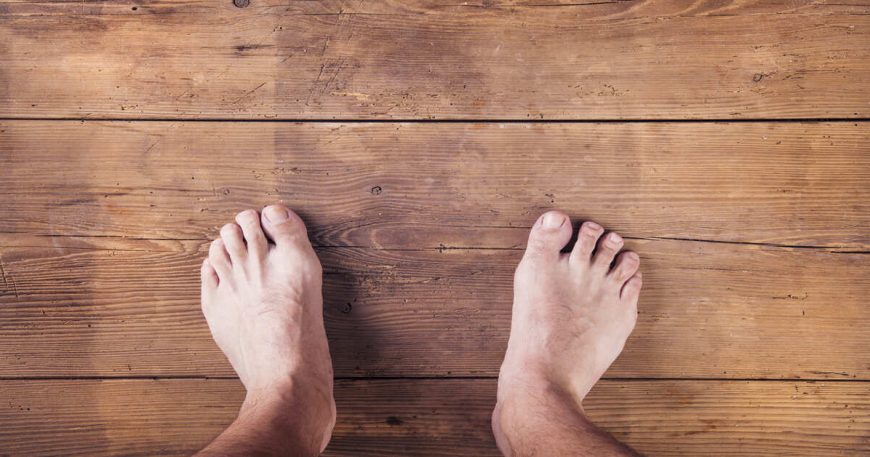
What Are the Most Critical Foot Conditions Challenging Podiatrists Today?
As a professional discipline that is concerned with the diagnosis and management of adolescent foot and ankle diseases, podiatry encounters a variety of new challenges regarding the treatment of the commonly occurring foot disorders. In an ever-changing environment of healthcare, podiatrists have to meet the new demands of patients, technological changes, and the rise of preventive care. In this blog, some of the most common foot conditions are discussed, the problems that are involved in treating such conditions, and the approaches that can be taken by the podiatrists to enhance patient outcomes.
1. Knowing the Common Quarterly Conditions.
Common foot conditions are a wide range of disorders that could severely affect the quality of life of a person. The most common conditions that can be encountered are:
a. Plantar Fasciitis
Summary: It is an inflammatory condition of the plantar fascia, which is a thick band of tissue that is located along the bottom of the foot and causes heel pain.
Challenges: The management of plantar fasciitis can be complicated because it is a multifactorial condition and in most cases this condition is associated with factors including obesity, improper footwear, and overuse. A combination of conservative treatment, which includes stretching exercises, orthotics, and anti-inflammatory drugs are usually performed.
b. Diabetic Foot Ulcers
Diabetic foot ulcers: Neuropathy and poor circulation in the feet of diabetic people cause open sores or wounds in the feet of diabetic patients.
Difficulties: Diabetics foot ulcers are not straightforward to handle and it involves using a multidisciplinary approach. To avoid complications, including infection and amputation, podiatrists should focus on underlying conditions, including blood sugar control, and offer wound care to prevent this complication and educate patients on how to take care of their feet.
c. Bunions (Hallux Valgus)
Overview: Bunion is the protrusion of the big toe at the base, which is usually painful and deformed.
Problems: The method of treatment can be both conservative, using footwear changes, and orthotics, and surgical procedures. The problem with bunions is that the severity may differ and they also may co-exist with other deformities which leaves the podiatrist with a dilemma of what should be done.
d. Fungal Infections
Summary: Athlete foot and toenail fungus are examples of fungus that are very prevalent and can be uncomfortable and embarrassing.
Difficulties: The treatment may be lengthy and needs systemic antifungal drugs. Patients have difficulty in following a treatment plan, and they face the risk of relapses, thus the necessity of preventive education.
e. Achilles Tendonitis
Summary: This is a condition of inflammation of the Achilles tendon, and it is usually attributed to excessive use or inappropriate footwear.
Problems: To treat Achilles tendonitis, there should be a balance between rest, rehabilitation exercises, and even orthotic interventions. Patients should be taught by the podiatrists on the value of gradual increments of activity levels to avoid re-injury.
2. Challenges that are emerging in Podiatry.
With the ever-changing field of podiatry, there are a number of new challenges that are emerging that make the management of common foot conditions more complicated.
a. Aging Population
Dilemma: Aging population is more vulnerable to foot conditions because of reduced mobility, chronicity, and age related alteration of the foot structure.
Strategy: Preventive care and early intervention should be given attention by the podiatrist, and they should educate them on foot health and advise on the right footwear and exercises, which would help them stay mobile and independent.
b. Rising Obesity Rates
Problem: Due to the rise in obesity rates, there has been a rise in foot-related conditions, especially the biomechanical stress-related issues, including plantar fasciitis and diabetic foot complications.
Strategy: The weight management programs and lifestyle interventions that can alleviate the burden of foot conditions are the approaches to obesity reduction. Nutritionists and other medical professionals can collaborate with podiatrists to build holistic care strategies.
c. Advances in Technology
Challenge: Although technological development, including telemedicine and wearable devices, creates some new opportunities in the area of patient engagement, it is also connected to the problem of accessibility and adjustment of the podiatrist to the new systems.
Strategy: Podiatrists must adopt technology in order to improve monitoring and education of patients. Telemedicine may be used to enhance access to care in remote patients whereas wearable technology can offer useful data on the activity and the health of the feet of the patients.
d. Prevention and Education
Issue: Patients are usually unaware of foot hygiene and the need to prevent foot issues, which results in the late-presentation of foot diseases.
Strategy: Podiatrists need to focus on patient education, which should include materials about foot care, footwear, and the need to visit the doctor regularly. A key part of this is sharing effective preventive foot care strategies to help patients maintain long-term health. Awareness of typical foot conditions and prevention can also be created through community outreach programs.
3. Techniques of Good Management
In order to cope with the challenges that are related to the common foot conditions, podiatrists may adopt a number of effective strategies:
a. In-depth Patient Evaluation
To be correctly diagnosed and successfully treated, a comprehensive evaluation is a must. Diagnostic tools such as gait analysis and imaging studies should be used by podiatrists in order to come up with specific treatments.
b. Multidisciplinary Approach
By working with other medical professionals, including endocrinologists, physical therapists, and nutritionists, the patient care can be improved, and the complexity of the foot conditions can be tackled, especially among patients with diabetes or obesity.
c. Ongoing Learning and Professional growth.
The podiatrists are expected to undergo continuous learning so as to remain informed about the new research, modalities of treaties, and technology. This professional growth dedication will make them offer the best of care.
d. Patient-Centered Care
Patient satisfaction and adherence to treatment can be enhanced through the development of a patient-centered approach focusing on shared decision-making. Engaging patients in their care strategies makes them become active in taking care of their feet.
Conclusion
Diversity of the contemporary healthcare environment has posed a lot of challenges to podiatrists in the management of common foot conditions. Realizing these complications and putting in place useful measures, podiatrists can improve patient outcomes and overall health and well-being of their patients.
With the constantly developing field of podiatry, education, teamwork, and patient-centered care will become the key to overcoming the arising obstacles, as well as providing everyone with the foot condition victims with the highest possible care.
Frequently Answered Questions (FAQs)
1. Which are the most frequent foot ailments that podiatrists deal with?
Some of the most frequent conditions that are treated by the podiatrists include plantar fasciitis, diabetic foot ulcers, bunions, fungal infections, and Achilles tendonitis. The causes and methods of treatment of each condition are specific.
2. What should I do to avoid common foot conditions?
The preventive measures involve proper foot care, proper and supportive footwear, control over chronic issues such as diabetes, healthy weight, regular foot exercises to strengthen the muscles and increase flexibility.
3. When is it time to visit a podiatrist because of foot pain?
You are supposed to visit a podiatrist in case you have chronic pain, swelling, and skin or nail change in the foot. The intervention should be done early enough and particularly in people who have diabetes, or any other underlying health condition.




